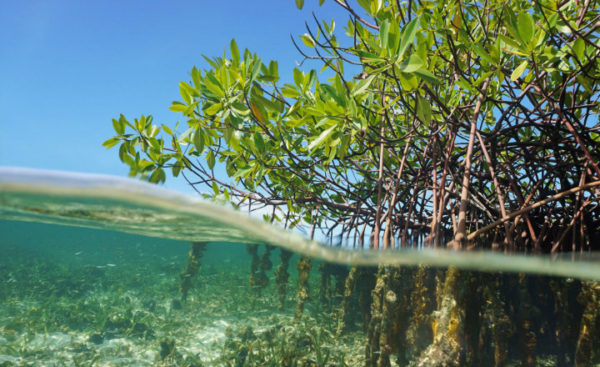The mangroves in the ports of San Felipe, Río Lagartos, Las Coloradas, and El Cuyo are the most affected areas due to urban growth. Several hectares have been devastated to provide space for housing for the residents.
Many households accommodate two to five families, and since there is no more space for construction, mangrove deforestation is resorted to. This practice is counterproductive as it leaves the communities unprotected against hydro-meteorological phenomena such as hurricanes, in addition to severely impacting the flora and fauna.
The habit of disregarding the originally stipulated land allocation by the residents has reached alarming levels. This area is adjacent to a vitally important surface, such as the nesting zone of the pink flamingo. Their habitat is threatened by the expansion of the urban sprawl, as stated by environmental biologist Julio Rojas.
Mangrove is a type of arboreal vegetation that thrives in saline and brackish waters, covering large areas, especially in swamps where seawater penetrates. Two types of mangroves are found in the area: the fringe mangrove and the stunted mangrove.
The fringe mangrove grows along the edges of the channels, at the mouth of the estuary, in the southern and southeastern parts of the swamp. This type of vegetation is permanently flooded by saltwater. It is a very dense community with an average height of 10 meters. The most common species are Rhizophora mangle, Avicennia germinans, and Conocarpus erectus. The less abundant white mangrove (Laguncularia racemosa) can also be found. This vegetation is crucial for maintaining the productivity of the lagoon.
The stunted mangrove thrives in extremely challenging environments with high salinity levels, poor soils, strong winds, and constant flooding. It consists of the same mangrove species, but numerous species of sedges intermingle with them. Its distinctive characteristic is its height, which barely reaches one to two meters. This type of vegetation is mainly found in the eastern portion of the reserve and the southern part of the lagoon, near the town of Río Lagartos. Approximately 20 hectares have been affected in both ports in recent years.
These systems promote an increase in plant and animal diversity, which is seriously threatened by human actions driven by the desperate need for living space.
The Ría Lagartos Biosphere Reserve is composed of populations located in three municipalities: San Felipe, Río Lagartos, and Tizimín. The demographic composition of the communities in the reserve shows a constantly shifting population due to varying growth rates experienced in the area over the past 30 years.

Migration in the communities of San Felipe, Río Lagartos, and Las Coloradas is very high and affects their population growth. The population originates from the following communities: Panabá, Tizimín, Motul, and Mérida. The reason for migration is the search for employment opportunities.
In the case of El Cuyo, there has been a significant increase in migration in recent years, caused by fishing permit holders offering their boats to take advantage of the commercial fishing seasons for high-value species. This has resulted in a considerable percentage of the population being transient and facing challenges in integrating with the local customs.
Currently, the trend among young people is to migrate to pursue further education, but the port also has a foreign population. There are at least 200 families of various nationalities.
The population growth rates in these communities are currently experiencing accelerated growth parameters, and there is an urgent need for land to build housing.
TYT Newsroom



